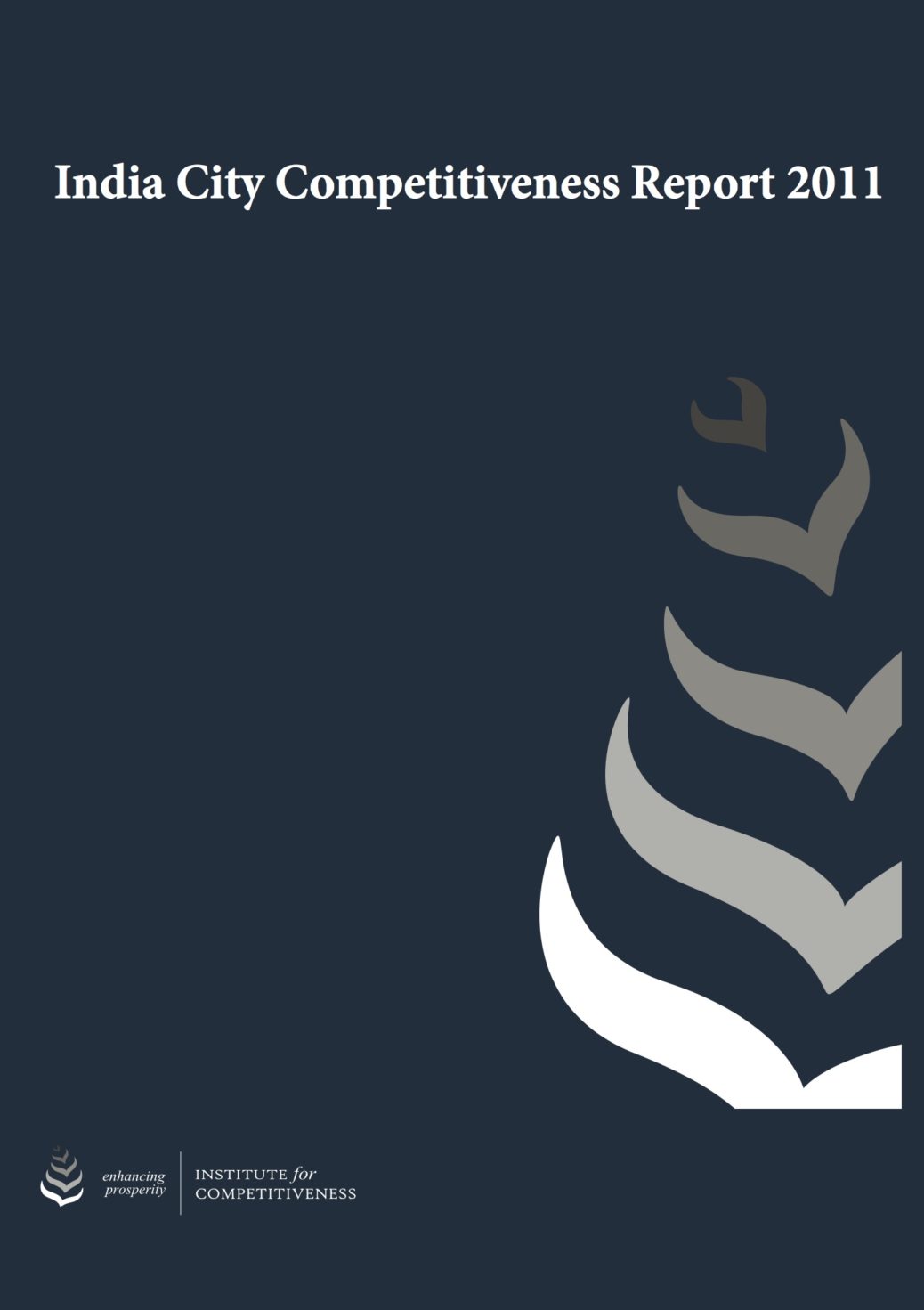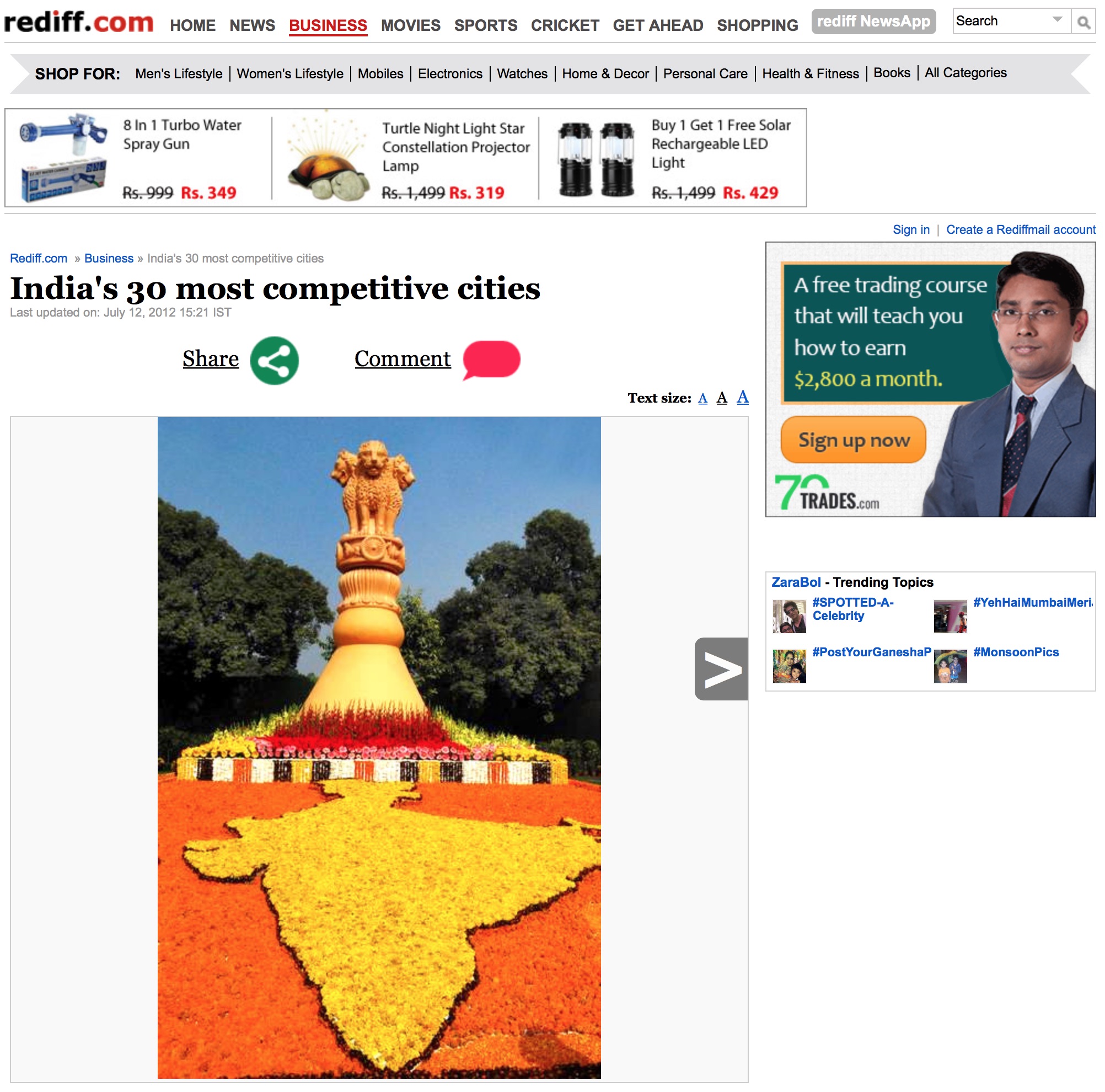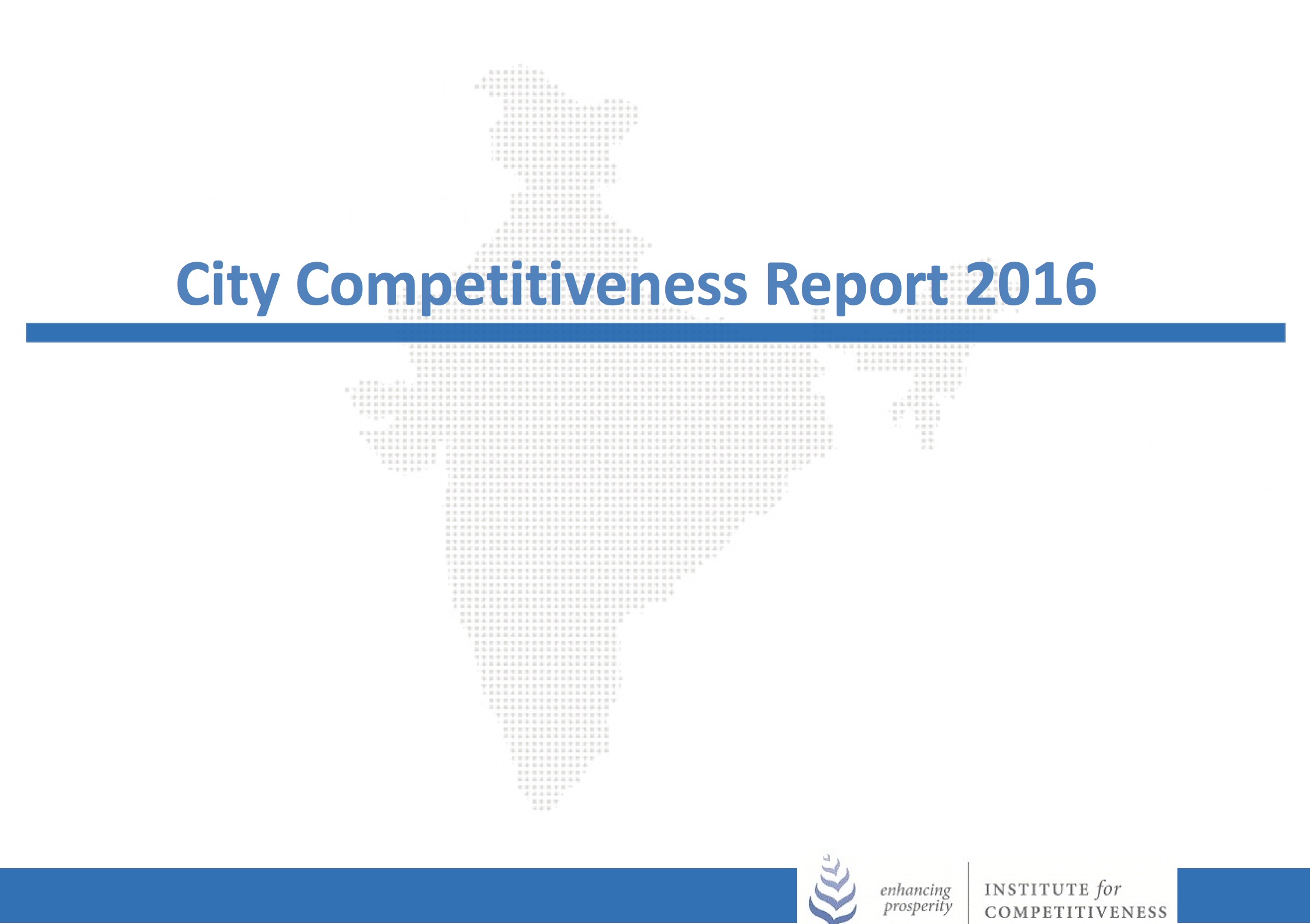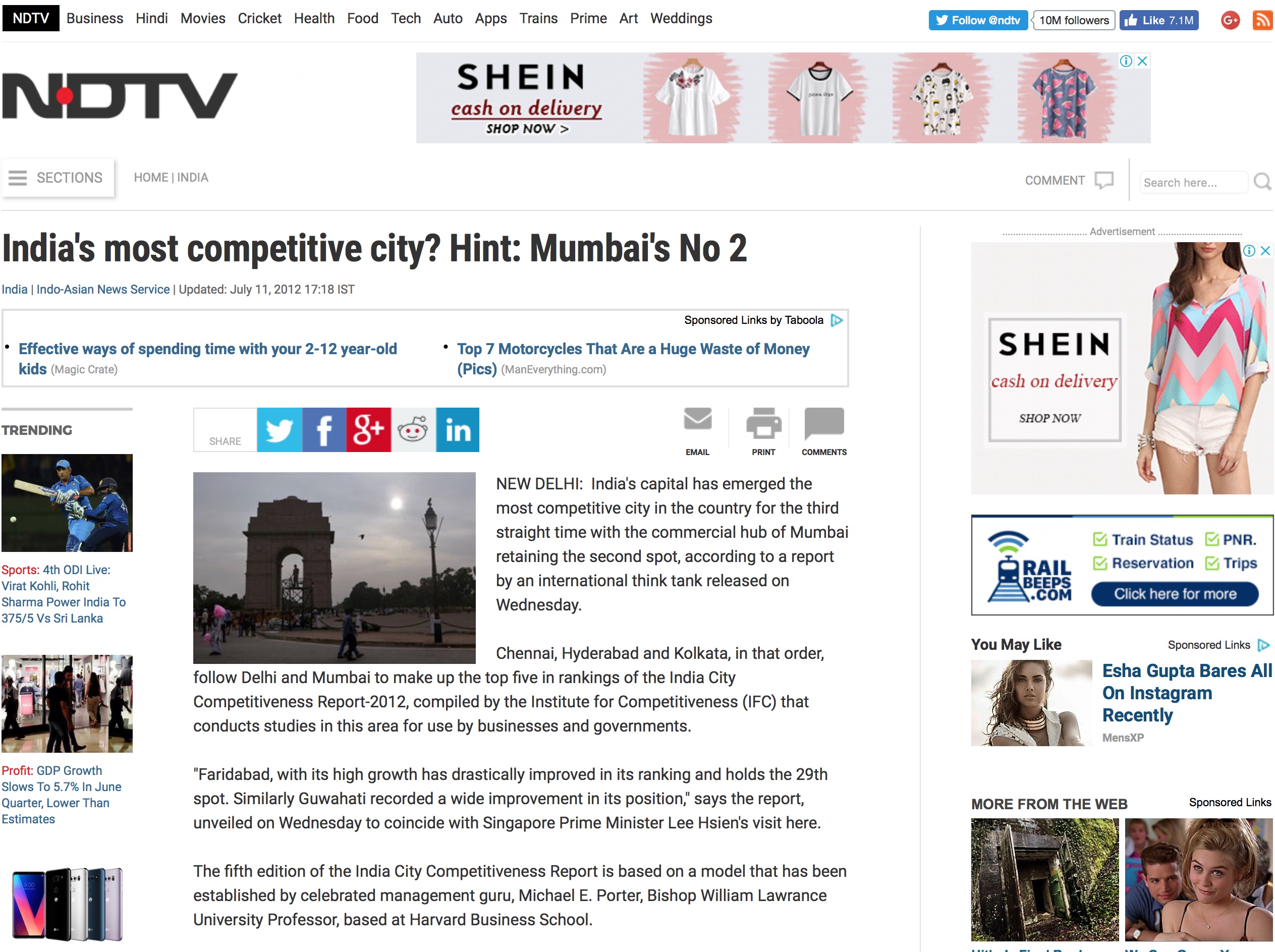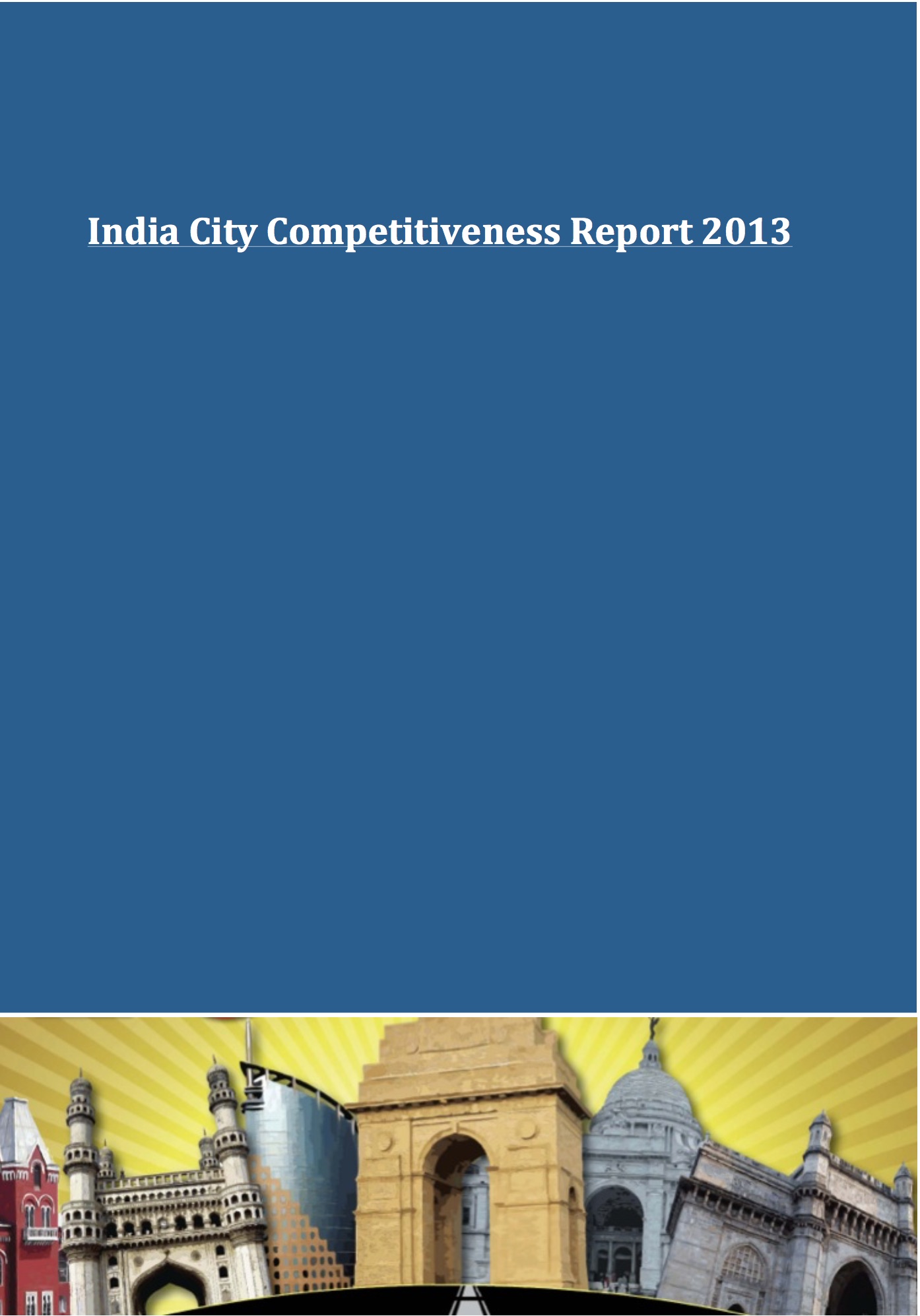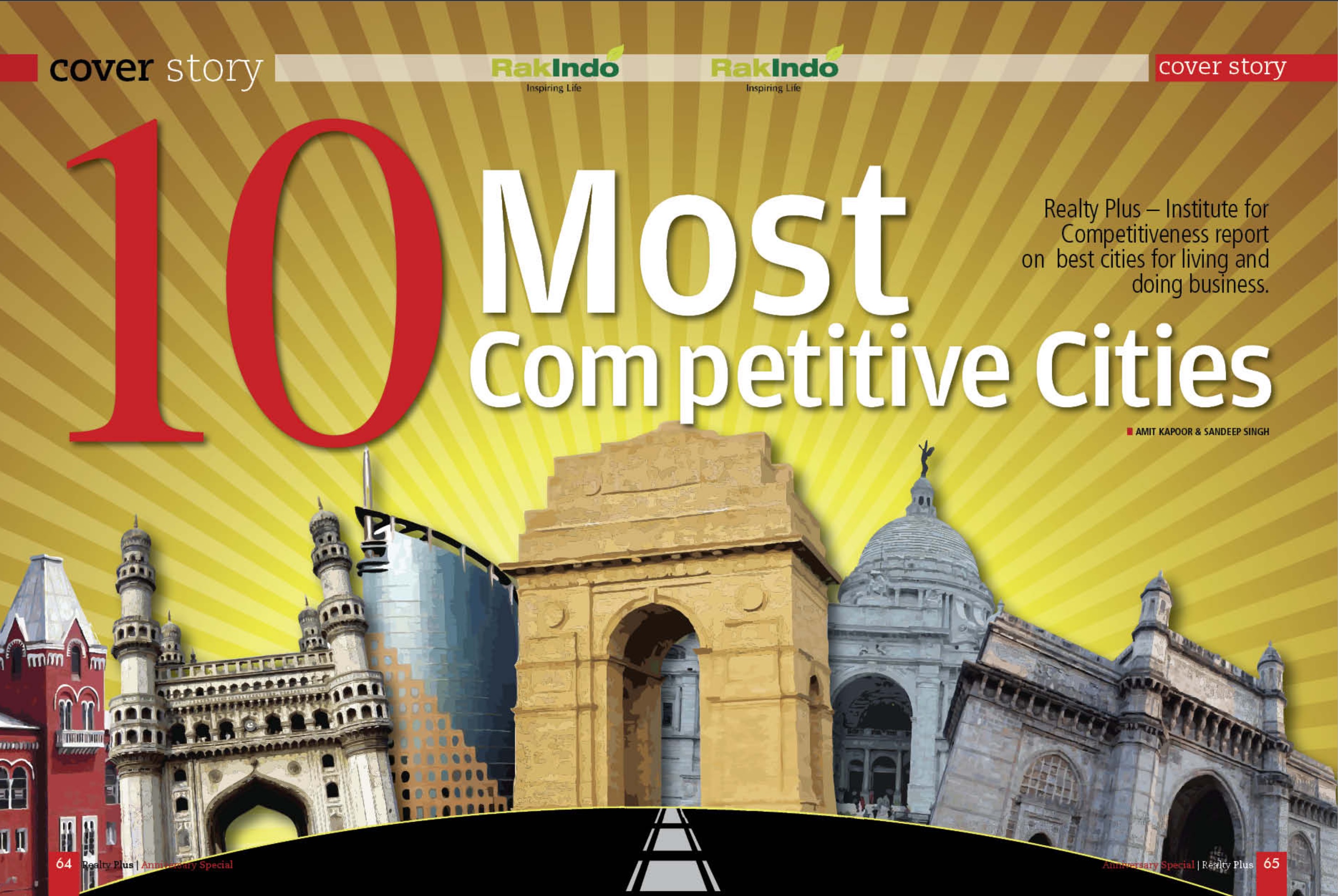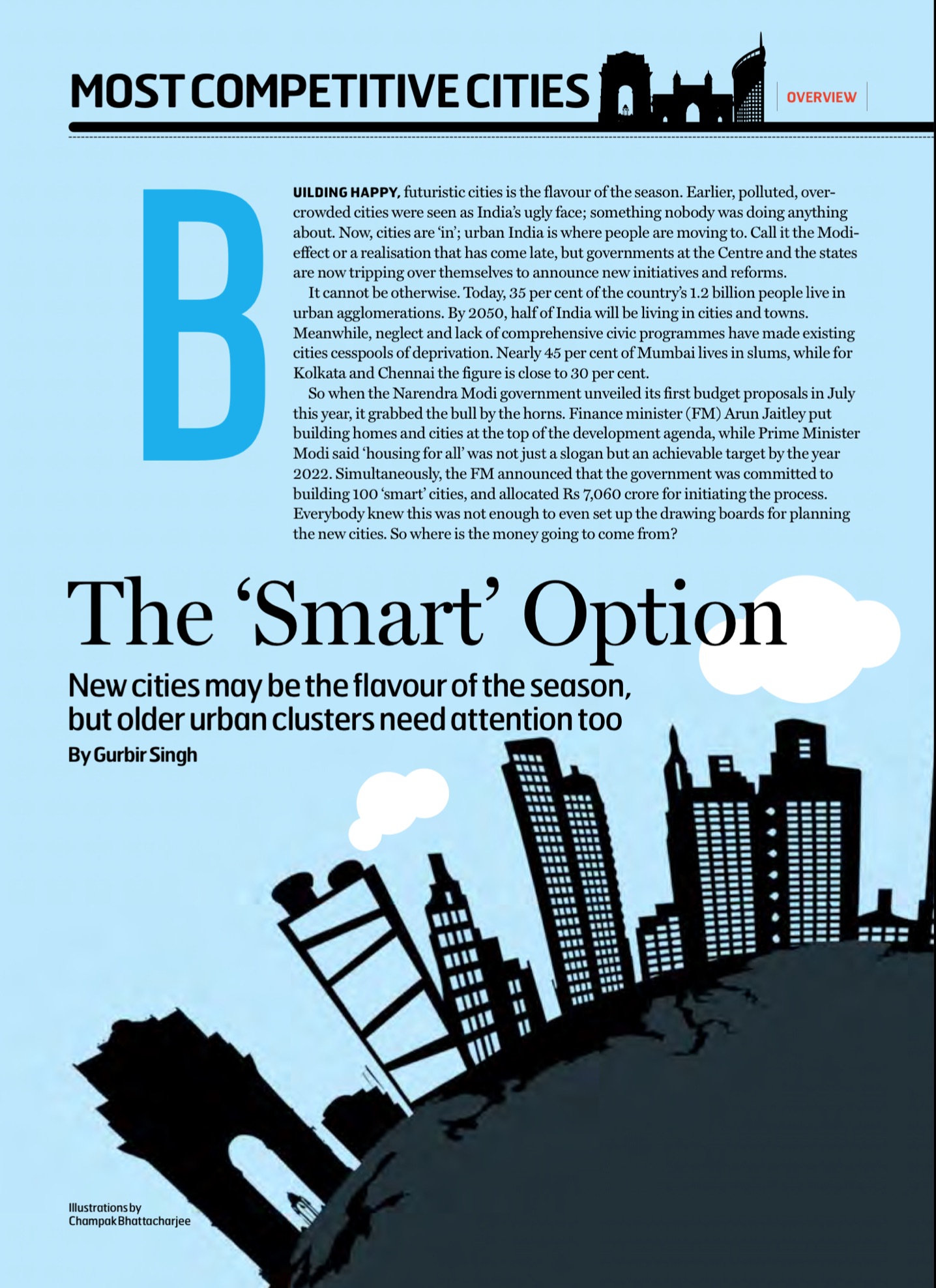India City Competitiveness Report 2011 with its Competitiveness Index gauges 50 Indian cities on various parameters. e index is based on the Microeconomic Competitiveness – Diamond Model, by the renowned Harvard Business School Professor, Michael E. Porter. e model stands on four pillars that takes into account every crucial aspect of the Competitiveness. e outcome of the index is an eye opener for the Government, Corporates and the people who are associated with these cities. e index has undertaken a holistic approach to assess these cities and depicts the level of productivity and prosperity of each city.
New Delhi has been ranked as the most ompetitive city in the country and scores well on three pillars. It has repeated its performance for the second time on the Competitiveness Index and has exhibited an overall improvement with only few weak areas. Mumbai follows the National Capital this time and attains the 2nd position by scoring high on demand and factor conditions. Bengaluru is placed at 3rd position, Pune at 4th, Chennai at 5th, Gurgaon at 6th, Kolkata at 7th, Hyderabad, Ahmedabad and Jaipur at 8th, 9th and 10th respectively.
Interestingly, Gurgaon lands at the 6th position despite of its poor infrastructure and other related issues. Some South Indian cities such as Kochi, iruvananthapuram, and Kozhikode etc. showcased a rise in their competitive level and achieved positions in the 11- 21 ranks of the most competitive Indian cities. Jaipur is the only city that maintained its position and stayed stable on the competitive index. Noida is the only city apart from the four metros that has gained number one position in the administrative sub index.
It has been identi ed that the di erent set of cities possess di erent opportunities and even the tier-2 and tier-3 cities also hold immense potential. However, it is required to tap their potential so as to explore the varied aspects of these Indian cities and help them gain their distinctive advantages. Cities such as Mysore, Madurai, Lucknow, Goa, Vijayawada, Agra, Patna etc. are seeking new opportunities and they should be nurtured further to achieve the required result.
Indian cities need to bridge the gap between them and the globally competitive cities. ey should grow in a sustainable manner, complimenting their own inherent strengths and developing a clear vision of their future. Cities need to move forward on the path of competitiveness by planning and implementing a suitable strategy that is based on their respective strengths and weakness’es We must work on developing these urban centers into great cities which could unite together to form a great county.

